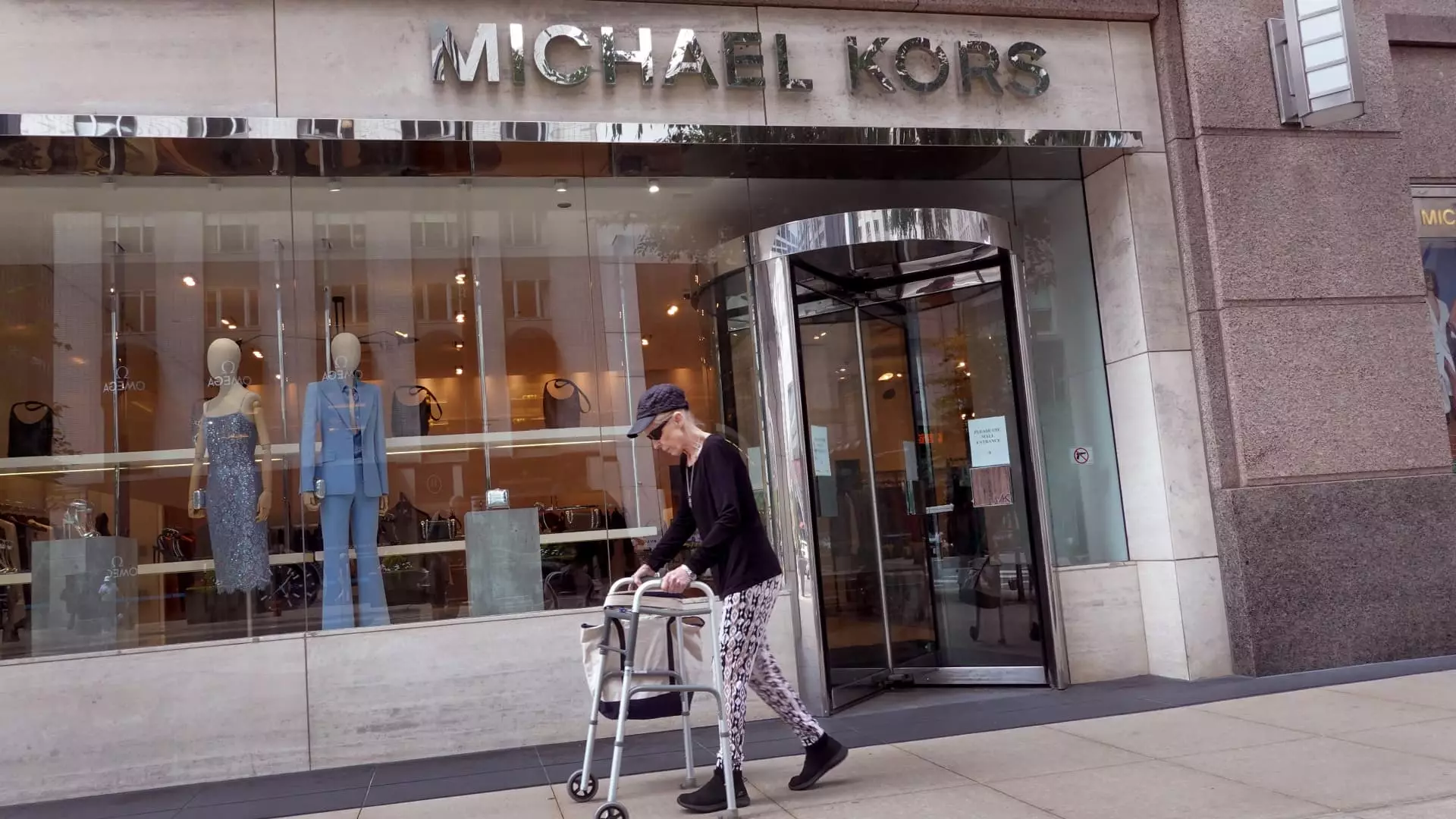In August 2023, the luxury fashion landscape was electrified by the announcement of a potential merger between two retail giants, Capri Holdings and Tapestry, which aimed to establish a powerful conglomerate in the luxury goods market. The proposed $8.5 billion acquisition would have synergized six prominent brands, uniting Tapestry’s iconic names such as Coach and Kate Spade with Capri’s revered Versace and Jimmy Choo. However, what seemed like a promising alliance quickly descended into a complex legal and regulatory battle, ultimately culminating in the abrupt termination of the merger on Thursday.
The merger faced significant scrutiny from the Federal Trade Commission (FTC), which expressed concerns that such a convergence could hurt consumer interests and diminish employee benefits across the brands involved. The regulatory bodies’ apprehensions were not without merit—merged companies often wield undue market power, potentially stifling competition and innovation. In April, following a lawsuit from the FTC, a federal judge granted a preliminary injunction, which further complicated the merger’s anticipated timeline. Tapestry’s decision to appeal the ruling hinted at both desperation and optimism, but as regulatory timelines stretched thin, the likelihood of acquiring necessary approvals before the agreement’s expiration date in February dwindled.
Upon withdrawing from the merger agreement, Capri’s CEO John Idol reaffirmed his commitment to the future of the brand, asserting confidence in its long-term growth potential without the merger. This optimistic outlook is essential as Capri has been navigating a challenging financial landscape, particularly with its key brand Michael Kors struggling to regain market traction. Furthermore, Tapestry’s decision to reimburse Capri approximately $45 million for its incurred expenses indicates the transactional complexities that accompany large-scale mergers. Such financial strategies, while often necessary, can also signify underlying volatility.
In the wake of the failed merger, Tapestry’s leadership communicated a resolute shift in strategy. CEO Joanne Crevoiserat emphasized the company’s commitment to organic growth, proudly announcing a new $2 billion share repurchase program aimed at bolstering shareholder value. This pivot away from acquisition-driven growth toward a more sustainable operational strategy may reflect an evolving understanding of market stability and corporate health amidst increasing competition in the luxury sector.
Conversely, Capri is actively reassessing its brand management strategies. Idol’s remarks about implementing “strategic initiatives” suggest a renewed focus on revitalizing the struggling Michael Kors line, which has seen a notable decline in sales over the past 18 months. Central to this revival will likely be efforts to enhance brand desirability through innovative marketing communications and improved product offerings.
The market responded to the merger’s termination with visible instability. Following the judge’s ruling, Capri’s shares fell sharply—indicating investor concerns about the company’s future without the merger. Tapestry’s stock, however, demonstrated resilience and even rebounded, reflecting investor confidence in its independent growth strategy. As of Thursday, Tapestry’s stock gained 6% in premarket trading, contrasting Capri’s 6% decline, illustrating a stark divergence in investor sentiment for the two companies.
Looking ahead, the outlook remains uncertain for both luxury houses. Tapestry’s focus on robust organic growth strategies and proactive financial management may serve it well, but Capri faces uphill challenges in revitalizing key brands. The luxury market is notoriously volatile, and the failure to merge might signal deeper issues within Capri, necessitating agile, forward-thinking approaches to capture consumer interest in an evolving marketplace.
The cessation of the Capri-Tapestry merger is a pivotal moment that exposes the complexities intertwined with consolidation in the luxury market. The regulatory environment remains a critical consideration moving forward, as companies must navigate not only market dynamics but also ethical responsibilities to consumers and employees. How each company adapts to this unexpected turn will shape their trajectories in an increasingly competitive landscape, dictating their ability to thrive independently in a world increasingly leaning towards personalized and diverse luxury experiences.


Leave a Reply